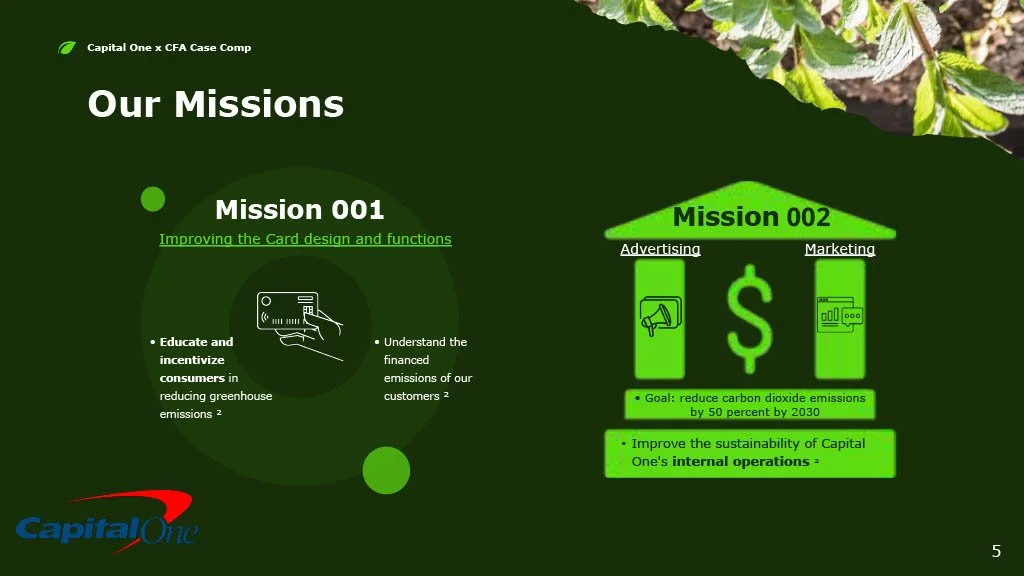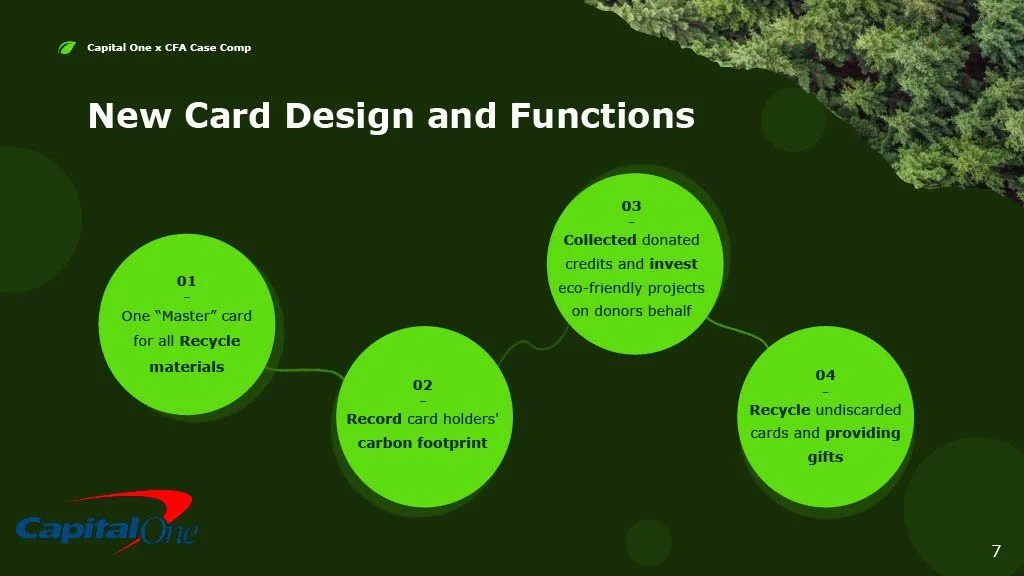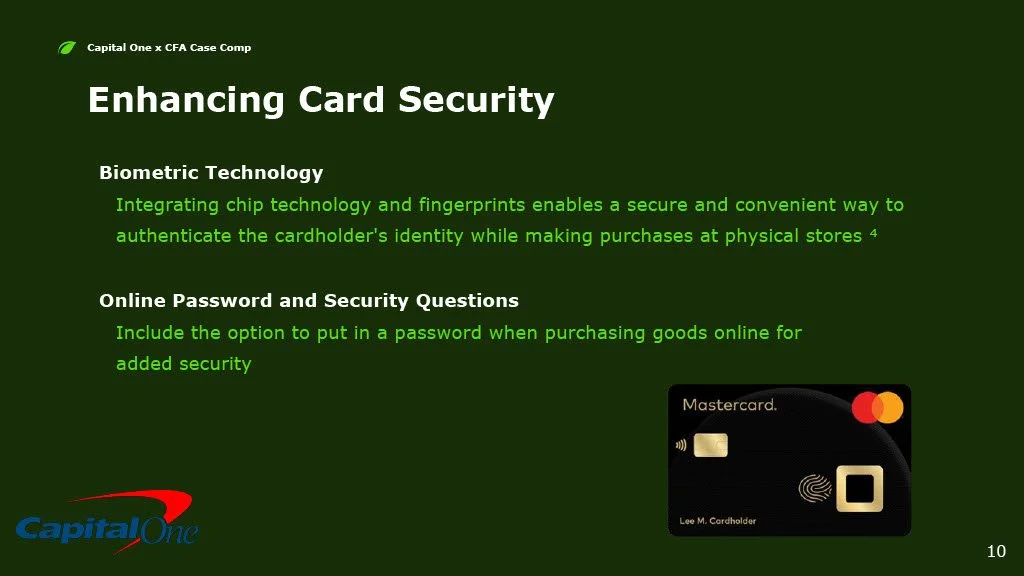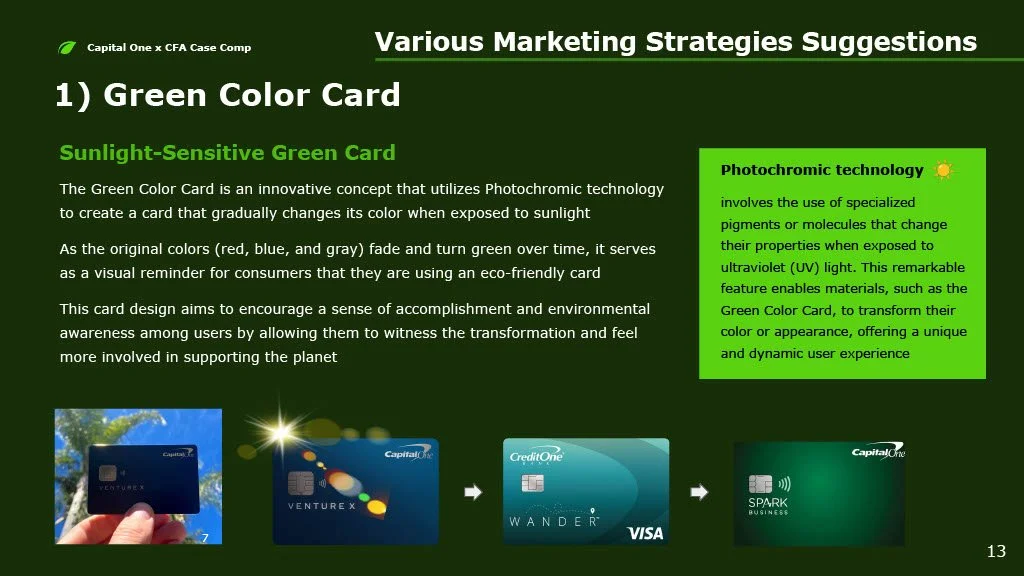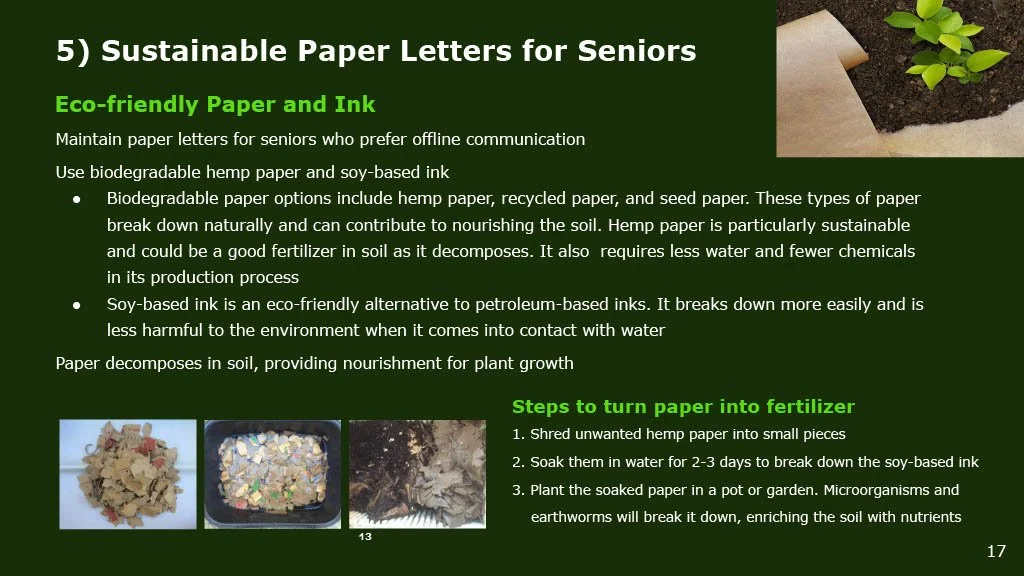Capital One: Aligning Corporate Strategy with Sustainability
The Challenge
Capital One, one of the top 10 U.S. banks and a major credit card issuer, was facing a new challenge—how to align its products with environmental consciousness in a way that actually inspires customers to act.
While the company had clear internal sustainability goals, it struggled to turn those ambitions into genuine consumer engagement. People cared about climate change in principle, but converting that concern into daily financial behavior required more than a slogan—it required behavioral design.
Core/Behavioral Insights
Our approach centered on reducing the psychological friction between intention and action, helping users externalize their internal values through design.
Behavioral Pivot (Cognitive Ease): Many consumers want to act sustainably but lack clear feedback loops to understand their own impact. By providing instant, non-judgmental feedback within financial tools, we could transform abstract concern into visible progress—making ethical action easier, not heavier.
Aesthetic & Identity (Signaling): The physical credit card itself—a pollutant that takes decades to degrade—was reimagined as a symbol of identity and purpose. We saw the card not just as plastic, but as a potential conversation piece that signals values and belonging.
Incentive Alignment (Gamification): We found that immediate, tangible rewards are far more motivating than distant, abstract benefits. Sustainable behavior, when framed as a rewarding game rather than a moral duty, drives higher engagement and joy.
Actionable Solution & Impact
We proposed a forward-thinking corporate strategy and three integrated design innovations to make sustainability visible, effortless, and rewarding.
Product Redesign (The Master Card & Materiality): Created a unified “Master Eco Card” made of recyclable bamboo or metal, reducing the 6 billion PVC cards produced annually. Designed a Sunlight-Sensitive Green Card that subtly shifts color when exposed to light—serving as a gentle, daily reminder of environmental impact.
UX Implementation (Carbon Footprint Tool): Designed a mobile dashboard that visualizes the carbon impact of each purchase and rewards eco-friendly spending with cashback incentives—making mindful consumption both satisfying and measurable.
Marketing Strategy (Digital Nudges): Proposed rewarding users who switch from paper statements to digital notifications, reframing sustainability as a shared effort between brand and customer.
Strategic Impact: This integrated strategy positioned Capital One as a financial brand that helps users live their values, projecting an estimated 28% five-year growth in eco-aligned product lines.
My Comment
This project became a deep reflection on how behavioral design can bridge ethics and convenience. We learned that people rarely change through guilt—they change through clarity, beauty, and ease. Turning financial tools—often seen as cold and transactional—into instruments of environmental empathy was incredibly meaningful to me. It reminded me that every good design, even in finance, is ultimately about helping people make the right choice feel natural.




